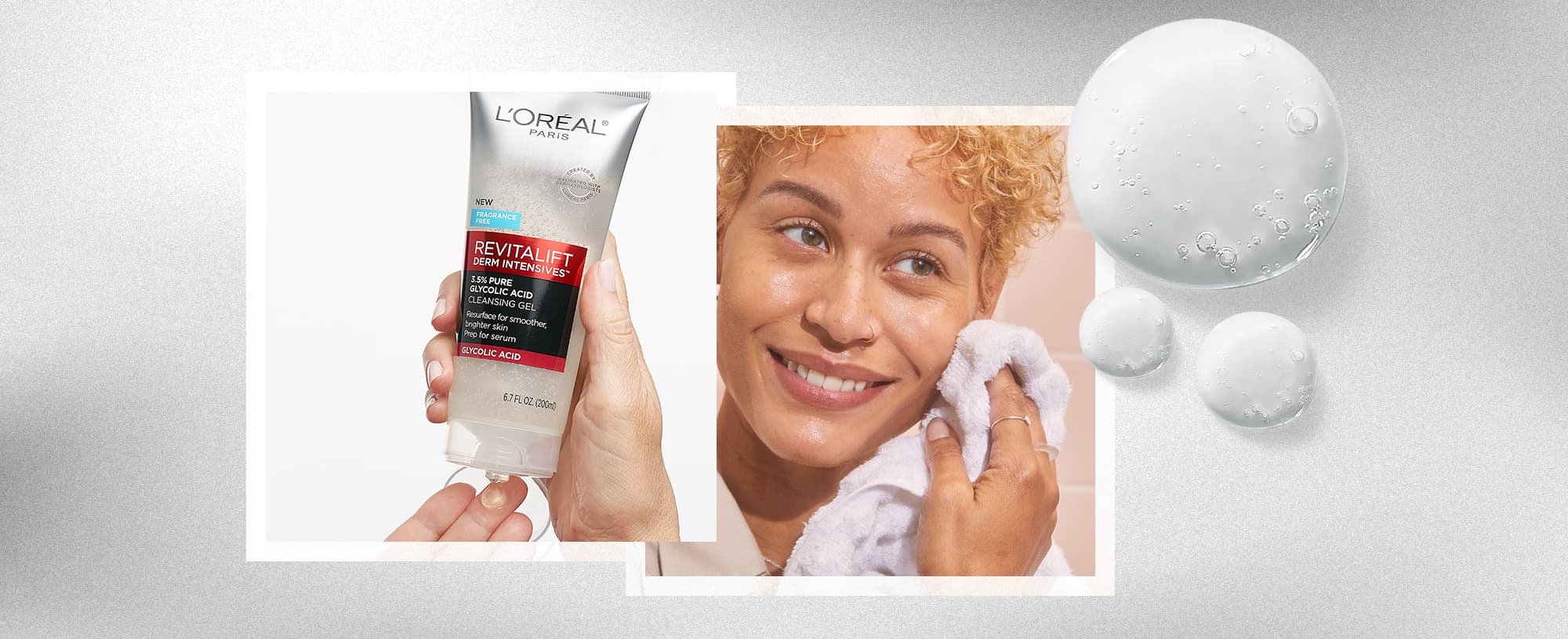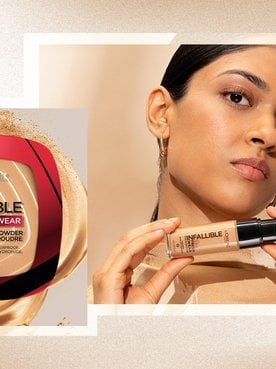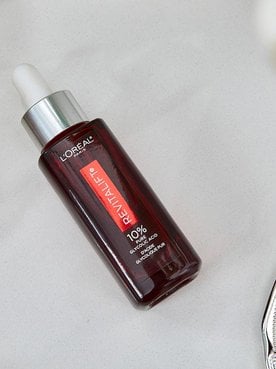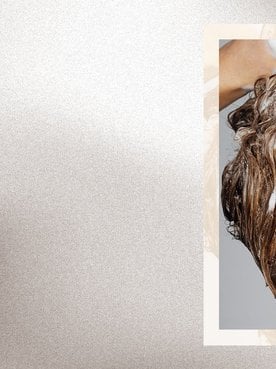Cleansing may seem like a simple skincare step, but it’s also the foundation of any good skincare routine. Cleansers help remove dirt, sweat, and other impurities from your skin’s surface and help promote a smooth, healthy-looking complexion. However, in order to get the most out of your cleanser, you’ll need to choose the right formula for your skin’s needs. And there’s no shortage of options to choose from.
Water-based cleansers are one of the most popular cleanser options, and for good reason. These H20-based formulas come in several varieties to suit the needs of many skin types and skin concerns—you’ll find hydrating water-based cleansers for dry skin, foaming washes, lightweight gels, and cleansing waters for an extra-gentle cleanse.
If you’re not sure whether a water-based cleanser is right for you, read on. We’re giving you the lowdown on these cleanser formulas ahead, including the benefits of water-based cleansers, how they work, who should use them, and how to incorporate them into your daily skincare routine.
What Is a Water-Based Cleanser?
As you can probably guess, the main ingredient in any water-based cleanser is water. This means that when you look at the ingredient label on the back of your cleanser, water should be the first ingredient listed. Water-based cleansers come in many varieties, but you’ll often find them formulated as foams or gels, like L’Oréal Paris Revitalift Derm Intensives 3.5% Glycolic Acid Cleanser. This exfoliating cleanser contains both alpha- and beta-hydroxy acids and helps visibly brighten the skin.
Regardless of format, water-based cleansers typically have the same general purpose: To help remove dirt, oil, and other impurities that can build up on your skin and clog your pores.
What Does Water-Based Cleanser Remove?
Water-based cleansers remove water-soluble impurities, such as sweat and dirt, from your skin’s surface. This is different from oil-based cleansers (like cleansing balms), which are designed to remove oil-based impurities, such as waterproof makeup, sunscreen, and excess sebum (oil).
To better understand how water-based cleansing works, you’ll first need to brush up on your chemistry knowledge. Scientifically speaking, both of these cleansers work according to the scientific principle of “like attracts like.” This means that water-based products will help break down water-based substances, and oil-based products will help deconstruct oil-based substances.
When Should You Use a Water-Based Cleanser?
These cleansers should generally be used as the first step in your morning and evening skincare routine, before applying serum, moisturizer, and sunscreen. With that said, many people also use water-based cleansers as part of a double-cleansing routine. To try the double-cleansing technique, simply wash your face with an oil-based cleanser first (to remove oil-based impurities) followed by a water-based cleanser (to remove water-based impurities).
Who Should Use a Water-Based Cleanser?
Although most skin types can use water-based cleansers, they’re often preferred by those with oily or acne-prone skin, or by those who prefer a refreshing, deep clean feel. They can also be beneficial for people with combination skin, especially during the warm, humid summer months when you’re likely to sweat more often. Water-based cleansers tend to have a lightweight texture that’s non-greasy and doesn’t leave any oily residue on your skin after cleansing. They make a great option for anyone seeking a cleanser that’s not as harsh as soap but will still leave their skin feeling clean and fresh post-cleanse.
However, like any skincare product, it’s essential to choose a water-based cleanser that’s ideal for your skin type, skin concerns, and personal preferences. The product label should tell you everything you need to know when selecting a cleanser, but it’s always best to consult a board-certified dermatologist if you have any questions.
Water-Based Cleansers vs. Oil-Based Cleansers
Is water-based or oil-based cleanser better?
When it comes to water-based cleansers vs. oil-based cleansers, there’s no clear-cut winner—it all comes down to your preferences and complexion goals. Both types of cleansers can offer skin-supporting benefits when used as part of a well-rounded skincare routine. In general, dry skin in need of extra moisture may prefer an oil-based cleanser, while oilier skin may enjoy a water-based gel or foam cleanser.
While some people opt for one cleanser option over the other, the good news is that you don’t need to choose just one. As mentioned above, many people incorporate both water-based cleansers and oil-based cleansers into their routine with the double-cleansing method. We suggest trying double cleansing in the evening as a way to help thoroughly remove oil, sweat, dirt, and makeup that accumulates throughout the day.
Can I use micellar water instead of a water-based cleanser?
Technically speaking, micellar water (also known as cleansing water) is considered a water-based cleanser, since it usually contains water as its primary ingredient. However, micellar water is also an entirely different cleanser category on its own. So, while micellar water can be a useful addition to your cleansing routine, it shouldn’t replace your oil- or -water-based facial cleanser.
You can think of micellar water as a bonus cleansing step: These cleansing liquids can be applied after your morning or evening cleanser as a way to help remove any impurities left behind after cleansing. Unlike water-based cleansers, micellar waters don’t need to be rinsed off. This makes micellar water a great on-the-go cleanser option for traveling and post-workout cleansing.
How To Use Water-Based Cleansers
Choosing the best water-based face cleanser for your skin’s needs is only part of the equation—you’ll also need to apply it correctly in order to reap the full benefits of your chosen product. Keep scrolling for a quick step-by-step guide on how to incorporate water-based cleansers into your routine.
Step 1. Remove any makeup
Unless your water-based cleanser is formulated to remove makeup, we recommend starting with a makeup remover, like L’Oréal Paris Eye Makeup Remover. Or, if you prefer, a cleansing oil or cleansing balm can also make an effective makeup-removing option.
Shop the Product
Shop the Product
Step 2. Wash your face
Once your makeup has been removed, it’s time to wash your face. Always follow the instructions on the label, but, in general, you’ll want to apply your water-based face wash onto damp skin, using circular motions to lather the product over your entire face (avoiding the eye area). Rinse using lukewarm water and pat dry using a soft towel.
Editor’s tip: Some people with extra-oily skin use a water-based cleanser for double cleansing—cleansing twice with a water-based formula for an even deeper clean. However, this method may not be for everyone, so it’s important to consult a dermatologist when in doubt.
Step 3. Continue with the rest of your skincare routine
After your skin is thoroughly cleansed, you’re ready to continue with the rest of your routine. This should include a moisturizer and sunscreen at a minimum, but may also include serum, toner, eye cream, masks, and more.
Editor’s tip: To cut down on steps in your routine, try using a moisturizer that includes SPF in its formula, like L’Oréal Paris Revitalift Triple Power Day Lotion SPF 30. This anti-aging moisturizer with pro-retinol, hyaluronic acid, vitamin C, and broad-spectrum SPF 30 sunscreen helps reduce wrinkles, firms, and brightens your skin tone in just one week.
Our Favorite Water-Based Facial Cleanser
So, you’ve decided you’re game for trying a water-based face wash. Below, learn more about our favorite water-based formula.
L’Oréal Paris Revitalift Derm Intensives 3.5% Glycolic Acid Cleanser
If you’re dealing with uneven skin texture, try an option like L’Oréal Paris Revitalift Derm Intensives 3.5% Glycolic Acid Cleanser. This cleanser with glycolic acid and salicylic acid smooths your skin, refines the appearance of pores, and brightens your overall complexion. Use this water-based cleanser daily for skin that feels hydrated, refreshed, and prepped for serum application.
Next Up: What Is the Purpose of a Facial Toner?
Photo Courtesy of L'Oréal Paris







